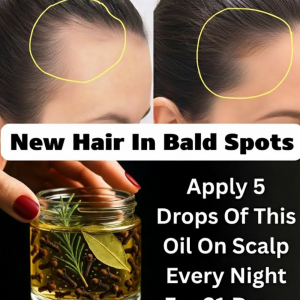
Have you ever noticed small red spots on your skin and wondered what they mean? These dots can appear for a variety of reasons—some completely harmless, others signaling something more serious.
Here’s a breakdown of 11 common causes of red dots on the skin, how to recognize them, and when to consider seeing a healthcare professional.
1. Contact Dermatitis
Red dots or patches may be a reaction to something that touched your skin—like soap, detergent, or a piece of jewelry. This is known as contact dermatitis.

- Symptoms: Itchy rash, redness, swelling, dry or flaky skin.
- Tip: Identify and avoid the irritant. Over-the-counter creams can help reduce symptoms.
2. Cherry Angiomas
These small, bright red or purplish bumps are made up of tiny blood vessels. They’re very common after age 30 and are usually harmless.
- Symptoms: Smooth, dome-shaped red dots that don’t fade when pressed.
- Tip: Removal is usually only necessary for cosmetic reasons or if they bleed.
3. Swimmer’s Itch (Cercarial Dermatitis)
This itchy rash is caused by microscopic parasites in contaminated freshwater lakes or ponds.
- Symptoms: Red, itchy bumps that appear after swimming in infested water.
- Tip: Antihistamines or topical creams can ease discomfort; most cases resolve on their own.
4. Heat Rash (Miliaria)

Blocked sweat ducts can trap perspiration under the skin, causing small red bumps or blisters—often in hot, humid environments.
- Symptoms: Prickly or itchy rash on the chest, back, neck, or groin.
- Tip: Keep skin cool and dry. Loose-fitting clothing and cool showers help.
5. Drug Reactions
Certain medications can trigger allergic skin reactions, which may present as red spots or a full-body rash.
- Symptoms: Redness, hives, or itching that may develop soon after starting a new medication.
- Tip: Discontinue the drug (with your doctor’s guidance) and seek medical care if symptoms are severe.
6. Atopic Dermatitis (Eczema)

Eczema causes inflamed, red, itchy patches, often due to a combination of genetics, allergens, and environmental triggers.
- Symptoms: Dry, itchy skin that may blister or ooze.
- Tip: Use moisturizers, antihistamines, and topical steroids to manage flare-ups.
7. Pityriasis Rosea
This harmless condition often begins with a single larger “herald patch,” followed by smaller red, scaly spots across the chest or back.
- Symptoms: Oval, pink or red patches, often itchy.
- Tip: Usually goes away on its own in 6–8 weeks; antihistamines can help ease symptoms.
8. Purpura (Blood Spots)
These spots develop when small blood vessels under the skin break and leak, causing red or purple patches.
- Symptoms: Flat, non-itchy spots that don’t fade when pressed.
- Tip: May result from aging or minor trauma, but widespread purpura may signal a blood or clotting disorder.
9. Ringworm (Tinea Corporis)
A fungal skin infection that creates red, circular lesions with raised edges and a clear center—hence the name “ringworm.”
- Symptoms: Itchy, ring-shaped rash.
- Tip: Treated easily with antifungal creams. Avoid sharing towels or personal items.
10. Psoriasis

This chronic autoimmune condition causes red, raised patches of skin with silvery scales—most commonly on elbows, knees, and scalp.
- Symptoms: Thick, inflamed skin that may itch or crack.
- Tip: Managed with topical treatments, UV therapy, or prescription medications.
11. Lichen Planus
This lesser-known condition causes flat-topped, purplish-red bumps that may be itchy and can appear anywhere on the body.
- Symptoms: Itchy, flat spots that may develop on the skin or inside the mouth.
- Tip: Often resolves on its own, but steroids or immune-suppressing drugs can help if it’s persistent.
When to See a Doctor

Most red spots on the skin are harmless and resolve on their own. However, you should seek medical attention if:
- The rash spreads quickly or worsens
- You experience swelling, fever, or pain
- Breathing becomes difficult (possible allergic reaction)
- The spots don’t fade when pressed (possible purpura)
Final Thoughts
Your skin can offer important clues about your overall health. While many red spots are minor, persistent or unexplained changes should never be ignored. If you’re unsure what’s causing a rash or red dots, speak with a healthcare provider for proper diagnosis and treatment.




